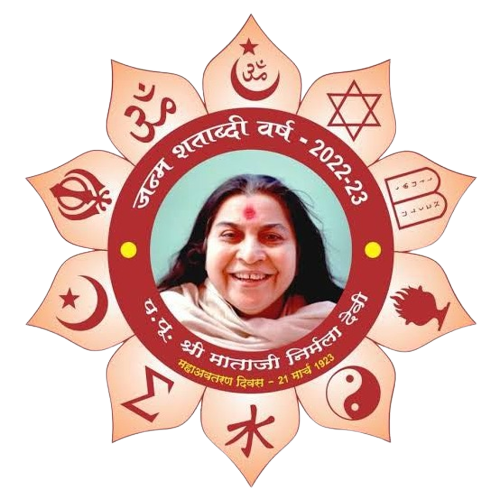National Projects
Some of our National Projects are listed below:
Sahaja Yoga center in Chhindwara, Madhya Pradesh
The Birth Place of H. H. Shri Mataji Nirmala Devi
“You must be knowing that I was born in Chhindwara, and Mecca and Chhindwara are on the same Cancer Line (Tropic of Cancer) – How is it?……” -H.H. Shri Mataji Nirmala Devi (Cabella Ligure, Italy, 25.05.1997)
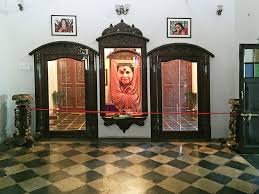
“My father built this house about eighty years back. He was very imaginative and fond of guests, so he also put up guest bedrooms and guest bathrooms such, and it was a hill station. Now of course, because of crowdedness – very cold and a hill station – so people used to come, his friends used to come from Nagpur, so he had made arrangements for them; there were no hotels or anything – so they used to have them. And the people of this place are extremely hospitable, very hospitable.
So it was his idea that he should have a house here where his guests would be. His brother had a big house but it was joint and he couldn’t receive his guests, so he thought it’s better to build a house here, and behind was a huge big compound bigger than this, which I have seen. I was only four years of age when we went away from here, but I remember each and everything about this house, and everything about Chhindwara.” -H.H. Shri Mataji Nirmala Devi, Talk at Chhindwara, 18/12/93
Shri Mataji was born as Nirmala Salve on March 21, 1923 to Shri Prasad Rao and Mrs Cornelia Salve in Chhindwara city of Madhya Pradesh. Chhindwara, located on the South-West region of ‘Satpura Range of Mountains’ lies between latitude 21″23′ and 22″49′ North and longitude 78″10′ and 79″24′ East. Mostly, dense forest covers most of the area of the district. It is bound by the plains of Nagpur District (in Maharashtra State) on the South, Hoshangabad and Narsinghpur Districts on the North, Betul District on the West and Seoni Districts on the East.
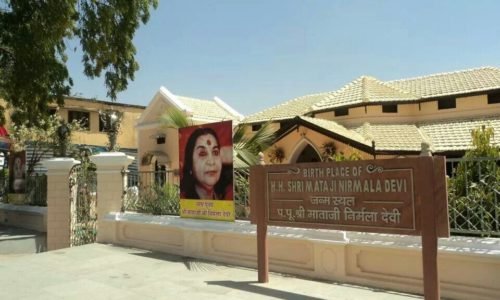
It is believed that once upon a time Chhindwara District was full of “”Chhind”” (Date-Palm) trees, and the place was named “Chhind”-“Wada” (wada means place). There is also another story that because of the population of Lions (in Hindi it is called “”Sinh””), it was considered that making entry into this district is akin to passing through the entrance of Lions’ den. Hence it was called “”Sinh Dwara”” (means entrance of the lion). In due course of time it became “”Chhindwara””.

History records the place from the time of the rule of Bhakth Bulund King, whose kingdom was spread over the Satpura range of hills and it is believed that his rule was upto the 3rdCentury. One ancient plaque, belonging to “Rashtrakut” dynasty, found in “Neelkanth” village. This dynasty ruled upto the 7th Century. Then came the “”Gondvana”” dynasty which ruled the area with “Devgarh” as the capital. King ‘Jatav’ of ‘Gond’ community has built the Devgarh fort. Bhakth Bulund King was most powerful in the dynasty and he had adopted Muslim religion during the rule of Emperor “Aurangzeb”. Later the power changed hands many times and finally ‘Maratha rule’ ended in 1803. On 17 September 1803, East India Company had taken over this kingdom by defeating ‘Raghuji II’, starting the British rule.
Chhindwara district also played a distinct role in the Indian Freedom Movement with the arrival of ‘Tantia Tope’ in 1857-58. As a part of National Awareness Moment Dr.B.S.Gunj and Dada Saheb Khapre visited this place on 11th May 1906. The people of Chhindwara participated in fight against Rowlatt Act., Non-Cooperation movement, fight against Simon Commission, Jhanda Satyagrah, Jungle Satyagrah, Quit India Movement, Dhanoura Kand etc. Mahatma Gandhi visited this place on 6th Jan 1921, Pt. Jawaharlal Nehru visted on 31st December 1936 and Sarojini Naidu on 18th April 1922. Many brave freedom fighters of this land laid their life for the goal of Independence. After Independence ‘Nagpur’ was made the capital of Chhindwara District, and on 1st November 1956 this district was re-constituted with Chhindwara as the capital.
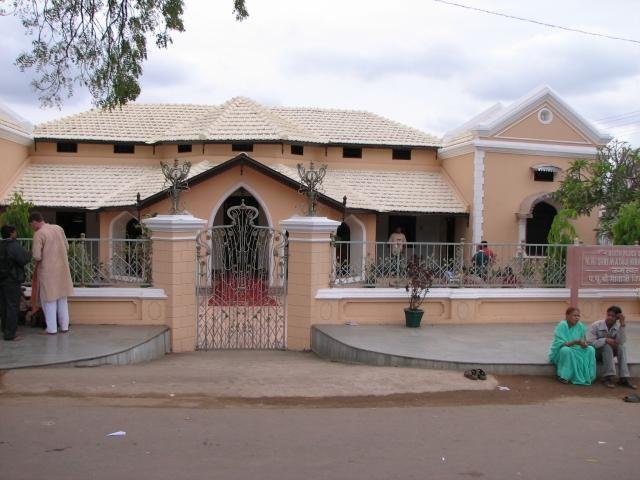
It ranks 1st in area in Madhya Pradesh State and occupies 3.85% of the area of the state. As per Census 2001 the total population of Chhindwara town is 1,22,309 and of the district is 18,48,882. Chhindwara is also known as the “Corn City” of India. It is the administrative headquarters of Chhindwara District. It reachable by rail or road from adjacent cities Nagpur and Jabalpur. The nearest airport is in Nagpur (125 Kms).
Chhindwara is famous for its forest and mineral wealth and also for a few eminent tourist spots such as Tamia, Patalkot, Devgarh Fort, Tribal Museum and renowned ‘Gotmaar fair’. One of the adjacent tourist spots is Bhartadev where a stone thought to weigh 10,000 kg apparently stands on a pin point.
Chhindwara Project – Mother’s Shrine
The House where Shri Mataji was born was acquired from the last occupant, Mr. Jamte by the HH Shri Mataji Nirmala Devi Sahaja Yoga Trust on 14th July 2005. Immediately thereafter, conservation experts from the Indian National Trust for Culture & Heritage (INTACH) were commissioned to firstly, assess the extent of structural damage due to vintage of the building and secondly, to suggest a roadmap to restore the building to its original grandeur. The express mandate was to restore the building to its original facade and form and at the same time strengthening it such that this spiritual treasure can be preserved for all time to come.

In the back side of the House, a meditation hall with a capacity of approximately 500 people has been built. The Hall has a basement, a mezzanine floor and a first floor. It has been equipped with Air Conditioning and a modern crowd circulation pattern to ease movement of people. It is in structural harmony with the overall structure with similar material as the main House being used in construction and with similar visual appearance. Space has been made around the house so that Yogis can walk around the outside of the house to tour the Shrine.
A route has been made for the Yogis to see the actual room in which our Holy Mother was born and thereafter see other aspects of the house. This route has been made to cater to the expected rush of Yogis in coming times and to allow everyone to see the Shrine in a systematic, organised manner.
“…you have come here (Chhindwara) to see this birthplace of Mine. It was such, such vibrations that My Sahasrara became completely jammed with vibrations: so cool inside, and outside was so hot that I didn’t know what was happening. So I’m happy all of you could come and see this place, and a very humble house it was, but in those days it was the most, I mean, well-planned house as such, and was very much appreciated by people.“
H.H. Shri Mataji Nirmala Devi Chhindwara, Madhya Pradesh, India, 18.12.1993
Sahaja Yoga center in Nargol (Gujarat) – Sahastrar Dham
H. H. Shri Mataji Nirmala Devi opened the Sahastrar at Nargol on 5th May 1970
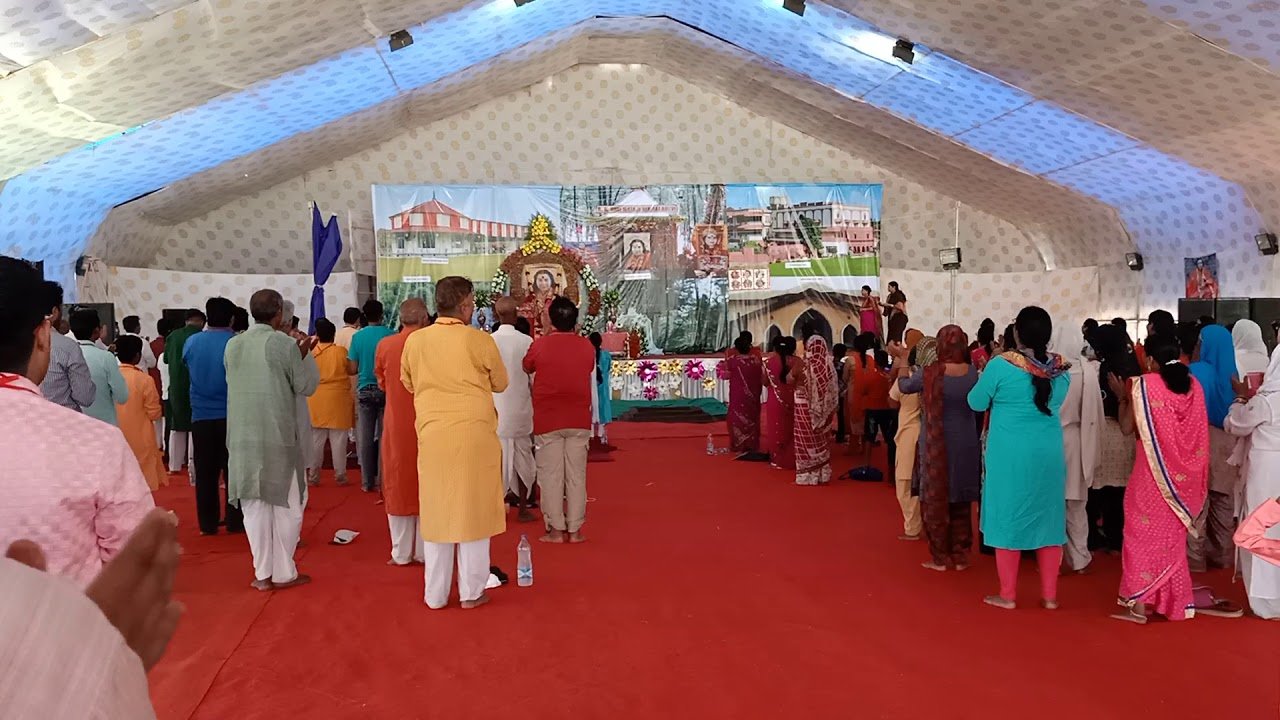
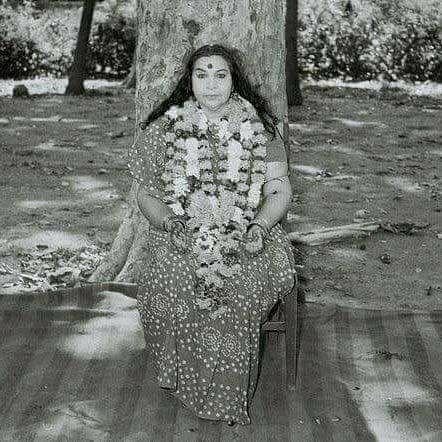
“…So the whole night I sat under a bilva tree near the seashore. I was just thinking, ‘How will I manage this en mass realization?’ And that is the day when the seventh chakra opened and when I saw how the kundalini was going to rise. Of course, I cannot explain this to you because it is a different level of understanding. It is a siddhi which is beyond chitta (consciousness). So with the siddhi I worked it out. When that happened, this one didn’t know anything about realization. Then I started this work.”
On May 5 1970- Nargol village situated in the State of Gujarat, India witnessed a historical event where our most Holy Mother Shri Mataji meditated to open the last Chakra of the Universe. Nargol, located at 20.2333°N 72.7500°E, is a small village situated on the coast of Arabian Sea in the southern region of the Indian state of Gujarat near the Maharashtra border. It lies about 150 kilometres north from Mumbai and around 400 kilometres from Ahmedabad. The nearest town is Vapi, located about 25 kilometres away, and the nearest airports are Daman and Surat.
-H.H. Shri Mataji Nirmala Devi
The nearest railway station is Sanjan, (about 11 kilometres from the village) with frequent train connections to both Mumbai in south and Gujarat in the north. Nargol beach is dotted with Casuarina trees (called as Saru in local dialects) and the waters have a population of sea turtles. The countryside surrounding Nargol is typical Indian countryside dotted with small farmhouses. The beaches are wide and lonely sandbeaches with big tidal water level differences.
Tracing the imprints of ancient history in Nargol, we get to know that it had been an active port in the past. The Parsi Community migrated from Persia & landed on the shores of Nargol first then spread south to Sanjan and north to Udvada. By the end of the 7th century, the mighty Sassanian Empire had been vanquished by Arab invaders. Many people of the Zoroastrian faith were consequently killed. Those who survived fled to the mountains of Iran. They were hounded out from there too, and after a brief respite in the town of Hormuz, they set sail for the friendly shores of India. The ship that carried them was soon enveloped in a massive storm. The ship was rocked but not their faith. They prayed till the storm passed. And suddenly they discovered that they were washed ashore on the welcome shores of Nargol in Gujarat.
Legend has it that their leader, a Dastur, or a Parsi Priest, led his people to the durbar of the king of Sanjan named Jadhav Rana. When the Dastur requested permission for his people to settle down in Sanjan, the king asked for an empty vessel and some milk. Then, in full view of all those present, poured the milk into the vessel till it was full to the brim. And gave it to the Dastur, as if to mean that there is no place in the kingdom to accommodate Dastur’s people. The Dastur took the vessel of milk in his hand, sprinkled sugar into it, gave it back to the king, and smiled. The vessel didn’t spill over but had become sweeter! The king was so impressed with this brilliant metaphor that he gave them permission to settle down in Sanjan. And thus began one of the greatest integrations of two communities ever witnessed in the world.
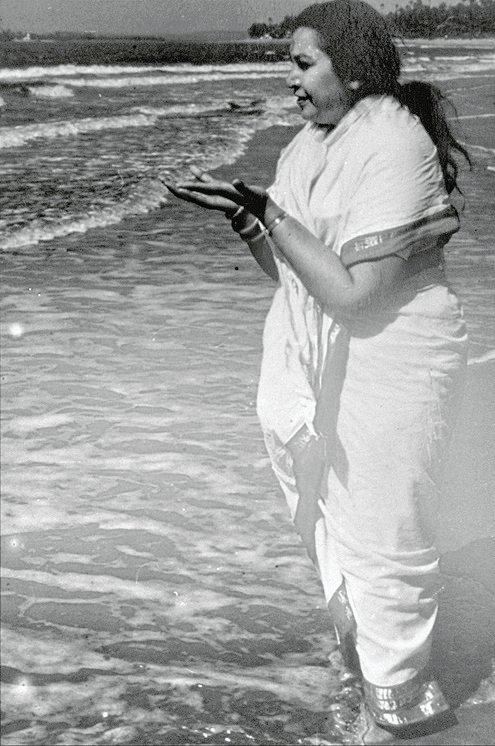
Out at the coast line of Nargol one can spot traditional small fishing boats that patrol the coast in search of fish. The village has palm trees too and the temperature is tropical.The beach is rarely visited by locals and is not very crowded. The seaside is part of the Gulf of Cambay (Gulf of Khambhat), which has very clouded waters with almost no visibility. This is possibly because of the large rivers that bring their humus to the sea around the bay.
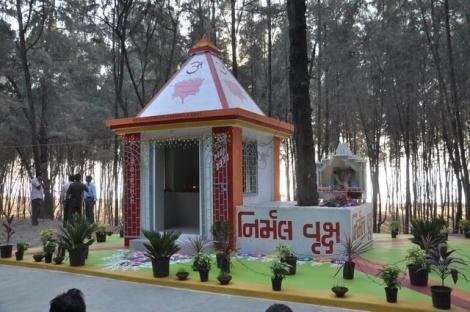
One of the most exciting new archaeological discoveries of the 21st century – probably an ancient city which is said to be even over 9000 years old – has been found 20–40 meters under the sea. The area is about 9 kilometers long with numerous geometrical formations and lies about 20 kilometers off the coast. This is one of the main findings of the marine archaeology in the Gulf of Cambay. The scientists made this discovery in the year 2000. This could be a major archeological discovery, but it is still unknown for scientists what exactly the finding is telling us. The area is very risky and difficult to excavate because of the water depth, strong currents and cloudy waters.
The Village has some good surroundings on all four sides. Arabian Sea to the West, Umbergaon to the south which is separated by a river and you still need a ferry to cross. To the South East is the Village of Sanjan and to the North is Saronda. Saronda is a beautiful small village with a population of around 1200 and has a beautiful hill with forest covered all over it. It also has two beautiful Lakes and sea on the other side.
In the history of Sahaja Yoga, it was on the 4th of May, 1970 that H.H. Shri Mataji Nirmala Devi decided to sit in meditation under a Saru (casuarinas) tree at this place of Nargol and in the early dawn of 5th of May 1970, between 4-5am, the ‘Brahma Muharat’, the auspicious divine moment, She opened the Sahastrara of the Universe. Shri Mataji has described that splendor, grandeur and Divine happening in Her lectures, about how the param chaitanya-the all pervading power of God’s love, entered Her body and the Kundalini, the Sahastrara shakti, was raised.
Shri Mataji had gone to Nargol on 3rd May, 1970 and stayed in a bungalow named Blue Heaven, which belonged to Shri Talyarkhan, the Collector of the Valsad (also known as Bulsar) District at that time. It is said by old local residents of Nargol that when Shri Mataji was meditating, on that night in 1970, four dogs came and sat at a little distance from the saru tree at the four corners and stayed there until the following morning. After opening the Sahastrara at Nargol on the 5th May 1970, Shri Mataji slowly, one by one, raised the Kundalini shakti of the seekers who came to Her, and they all felt the param chaitanya power, the cool breeze, on their fingertips, hands and at the Sahastrara chakra.

..”I remember the first incident when we went to Nargol, where I had opened the Sahastrara. The first person who got realization was a Gujarati and a jeweler. Immediately, all the other, there were hardly about thirty-five people, they started saying that, of course, he’s a rich man, he’s a jeweler, so Mother has given him realization. I think that’s the first time and last time I really got angry. I started shouting at them, you’re good for nothing, useless people, you can never take to Divinity and I had really thought that stop it now, when I have to take another life, another time where people will understand what is Sahaja Yoga. But after that, suddenly, people started feeling the cool breeze in their hands, immediately after my shouting. Imagine. And they said, “Mother, I know, it’s working. It’s working in us. It’s working out of us.” Thus, we got twelve people and one lady whom I’d given before also, she was the fourteenth. Thus, first we had only these fourteen Sahaja Yogis.”
-H.H. Shri Mataji Nirmala Devi; Delhi; March 21,1993
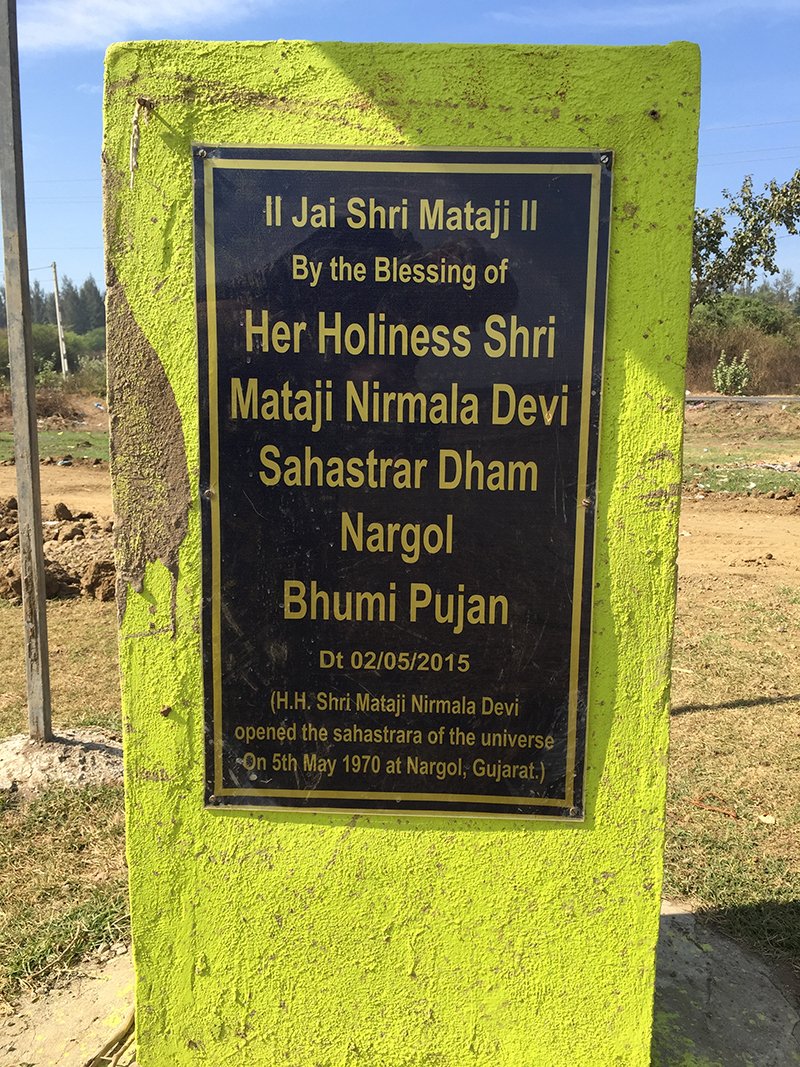
Subsequent to the happening of this Divine event at Nargol in 1970, the place had been blessed to celebrate the auspicious occasion of Sahastrara Day every year on May 5. A special project for Nargol was undertaken by the collective efforts of yogis to transform this holy place to be another Sahaja pilgrimage in line with other ongoing Sahaja projects. A few years ago a concrete wall boundary around the Holy ‘Saru Tree’ (casuarinas) was constructed. The forest land surrounding the “Nirmal Tree” has finally been declared and inaugurated as “Nirmal Van” in an official ceremonial function hosted formally by the representatives on behalf of the Indian Government along with the State administrative functionaries and the Nargol jurisdiction authorities on March 2, 2009. This means that the casuarina forest surrounding the holy tree will have a status of a protected area.
There was also an official ‘plant sapling’ ceremony that followed. The chosen plant saplings were vibrated a day before by Shri Mataji at Pratishthan, Pune. The saplings were mostly of Bael (Aegle marmelos), Ashoka (Saraca indica L.) and Peepal (Ficus religiosa). All of these species grow as high rise trees and possess unique spiritual significance along with several medical (Ayurvedic) and herbal values.
Typically they are associated with incarnations and deities like Shri Shiva, Shri Rama, Shri Buddha, Shri Mahavira, Shri Sita and Shri Hanumana and therefore traditionally these trees are revered and worshipped in Oriental world.The memorandum of understanding signed by the concerned authorities also declares that around three acres of land adjoining the site of the “Nirmal Tree” may be utilized and developed as meditation zone for the Sahaja Yogis in due course.
By the blessing and under the divine guidance of our beloved mother, work has begun for building “Sahastrar Dham” at the holy place of Nargol, with bhoomi pujan held on may 2009. The prosposed plan for “sahastrar dham” includes a hall for collective weekly meditation/puja, an ashram for those who want to visit tirth (holy place) ‘nargol’. Among other things, it also aims to build and grow ayurvedic medicinal plants, through sahaja yoga method, drip irrigation & natural manure, to provide basic education for village children, to provide eternal joy & bliss to a seeker within his/her own self through means of music, fine arts & creation of handicraft.
It is our collective interest; desire and prayer at Her Holy Feet that may Shri Mataji bless us to build this beautiful Sahastrara Dham at this most holy place on Earth where the Sahastrara of the universe was opened.
..”It’s a very unique thing that has happened that your Sahastraras were opened out. There were some very few people in this whole world; there were some Sufis, there were some saints, some other people also in China and all. But very few, very few got their Sahastrara opened out. So whatever they said, or [was] written, was never understood by the people; they actually tortured them, they crucified them and did all kinds of horrible things, because they couldn’t bear somebody getting this Realisation. So, it’s a very great day because collectively the Sahastrara has been opened.”
-H.H. Shri Mataji Nirmala Devi; Cabella Ligure, Italy; May 5 2002
..”The Sahastrara is the blessing of the heavens, I should say. It has worked out so well. It’s very difficult to break the Sahastrara. And when I really broke it, I didn’t know that it would be that successful. First, I thought is still premature because there are many Rakshasas still on the street, selling their goods; and there are many fanatics who are calling themselves by the so-called religions they are following, not the real religion of the Atma. But, gradually it has taken its roots. Now, let this truth take its root within yourself through your Sahastrara. And once this truth becomes absolutely the light that guides you, the light that nourishes you, the light that enlightens you and gives you a personality that has the light, then only you should know that your Sahastrara is completely enlightened by your Spirit.”
-H.H. Shri Mataji Nirmala Devi; Delhi, February 4,1983
Photo Gallery of Sahastrar Dham






Sahaja Yoga center in New Delhi – Nirmal Dham
Last Abode of Shri Mataji’s sakaar swarup
Nirmal Dham is the final resting place in physical form of H. H. Shri Mataji Nirmala Devi, founder of Sahaja Yoga, remains one of the holiest sites visited by Sahaja Yogies from all over the world. After Shri Mataji left for Her Cosmic Abode on 23rd February 2011, a temporary monument was built in 2012 to reminisce her formless presence through cosmic vibrations at Nirmal Dham, in Chawla village, near Dwarka sector 21, New Delhi NCR.
Sahaja Yogis visit the Holy Shrine (Sanctum Santorium) which is a white domed hall surrounded by glass walls so that one can have the darshan of Shri Mataji. Its the last abode where Shri Mataji’s sakaar swarup laid to rest.

The rounded hall is surrounded by lush greenery across a seven and half acres plot with two meditation halls, a big hanger, rooms and dormitory for visiting Sahaja Yogies. The Sahaja Yogis of Delhi NCR visit this Holy place for regular weekly meditation and pujas.

There is a plan for building a temple (Sanctum Santorium) at Nirmal Dham. The available land of seven and half acres plot was acquired around year 2000 on which the future temple (Sanctum Santorium) is planned to be constructed. Since year 2012, nine designs were received from eminent architects from around the world for the consideration. Out of these designs, three designs were short listed and one among them will be finalised for construction of a world class marvel.
How to Reach Nirmal Dham:- Delhi is easily accessible by bus train and air. The nearest airport is the domestic and international airport around 5 kms from Nirmal Dham. One can hire a taxi frm the airport to reach Nirmal Dham.
To reach by metro train, which connects ISBT, New Delhi Metro Station and Anand Vihar Metro station, one can get down at Sector 21 metro station and take an auto / Taxi from there for Nirmal Dham. Contact details of Nirmal Dham are mentioned below Telephone: +91 11 23456789 E Mail: delhinirmaldham@gmail.com
Sahaja Yoga center in Greater Noida – Vishwa Nirmala Prem Ashram
NGO for orphan girl children

“So, this NGO will work for women who are left by their husbands, by their family – who has nobody to look after – and also their children. Still I have not made the whole plans. But before starting Sahaja Yoga, I used to do lots of things like that. So I have quite a lot of experience. Our attention should be, really, towards people who are in trouble. Now – as we are now enriched with divine power – we should look after those who really deserve our attention. Also, we are going to teach them different arts and crafts and things so that, within two years they will be able to stand on their legs and they won’t be, anymore, beggars on the street. And I am sure you’ll like the idea of having one NGO here.”
-H.H. Shri Mataji Nirmala Devi; New Delhi; February 13, 1999
Vishwa Nirmala Prem Ashram-a project for the rehabilitation of destitute women and orphan children has been founded by Shri Mataji as a Non-Government Charitable Organization (NGO). It is dedicated to the rehabilitation of the weakest sections of the society, namely destitute women and orphan children, with focus on the girl child without any differentiation on the basis of caste, religion, region, race or colour. As the mother, women are naturally empowered as the creators and preservers of all humankind. However, some sections among women still remain the weakest and are discriminated against and exploited. The NGO aims to provide temporary shelter and vocational training to such helpless, destitute and abandoned members of the society, and to rehabilitate them for their socioeconomic and spiritual upliftment…have pure motherly love for every human,every animal,for nature and the whole mother earth. Develop inner balance and peace..be collective,tolerant and respectful to everyone.
-H.H. Shri Mataji Nirmala Devi
H.H. Shri Mataji Nirmala Devi has inaugurated the building on March 27, 2003 and Her divine presence has blessed the Ashram to provide succour and relief to the needy and socially abandoned women and children. At VISHWA NIRMALA PREM ASHRAM they will be provided with basic necessities and amenities of life and will also be provided requisite vocational skills, to make them capable of sustaining themselves economically. The NGO will assist trainees in providing suitable employment. The residents will also be guided spiritually so that they are transformed to a state of inner peace and balance enabling them to face life in a much better way even after they leave the Ashram and are suitably employed to make them self reliant.
The vision of the ashram is to provide a joyful,secure and a loving life to women and children who have been neglected by the society. We are confident that equipped with this love,these family members will blossom into beautiful flowers and spread the message of compassion. The home has an environment which will give courage to the members to take up the challenges of the society and help to live a dignified independent life,which is being enjoyed by Sahaja yogis all around the world. We see this as yet another way of spreading the message of H.H.Shri Mataji Nirmala Devi of having pure motherly adoration for Mother Earth. Thus our aim is to provide ultimate inner balance,peace,tolerance and respect for each other. The enchanting building in Greater Noida, Uttar Pradesh has been designed by H.H. Shri Mataji Nirmala Devi Herself. A refreshing water fountain at the entrance of the ashram welcomes one and all. This leads to spacious, cool and shady verandas. The courtyard inside the building is teeming with life as it harbors goldfish ponds and a large birdcage, thus one is never far away from the melodies of nature. The garden surrounding the ashram is home for many trees, bushes, flowers, small animals and birds. Thus one feels completely in tune with Mother Nature throughout the year.
The building itself consists of four big halls which are used as dormitories and are amply furnished with cupboards, beds, tables and chairs. It is also well-equipped with a fully functional kitchen. Adjoining the kitchen is the dining hall where the ashram members get to socialise whilst enjoying the delicious food, cooked by the ashram members with love and devotion. A doctor’s room, two guest rooms, an office and a room for the director also form the ground floor of the home. The first floor is occupied by a huge meditation hall and a small room for Shri Mataji. Apart from this, there are two rooms for ladies accommodation, General manager office, a training hall with sewing machines, small beauty parlour, computers and a library which is open to all the members living in the ashram. Each day begins with prayers and ends with talks of Shri Mataji or bhajan singing, to enable the residents to achieve a state of inner peace and balance. This is based on the principals of Sahaja Yoga meditation to achieve the highest state of awarenss. We give them a feeling of security, to enable them to feel loved and respected.
We nurture holistic development of children by imparting basic education and providing vocational training viz; beauty parlour, basic computer education, tailoring, embroidery, other handicrafts, for them to sustain their individual growth. All our children attend English Medium schools nearby. Their homework is guided by professional teachers, we have special tuition classes for our students and we also conduct computer literacy classes. In addition to this, emotional and behaviour development support, for each child is given to nurture their necessary life skills. Children are also involved with extra curricular activities like instrumental music, dance, sports, singing etc that helps to enhance their talent and skills.
Workshops are conducted to groom children in the field of hygiene and self care, cooking, art & craft, women self defence, to enhance their capabilities. Medical camps and counseling sessions help to support their overall well being. “Where the women are respected and respectable, there resides the Gods of our well-being- ” by H.H. Shri Mataji Nirmala Devi,Founder of Vishwa Nirmala Prem Ashram and Sahaja Yoga. The ashrams aim is not only to provide sustenance for the present but also for the future for these women. With this priority, women are trained to have various skill sets such as tailoring, beauty care, massage, health care, cooking, gardening, candle making and/or computers. The ashram also tries to arrange any other course outside which cannot be provided within the ashram. These women achieve financial and emotional independence, confidence to earn a livelihood within one or two years. They are also helped to find a job or get into matrimony.
The residents celebrate most of the local festivals, such as Raksha Bandhan, Holi, Diwali, Dushera and Christmas, and also enjoy their birthday parties. Our residents attend Sahaja Yoga seminars and programs held across India. They have been regular participants in cultural activities at these seminars and festivals. In addition to this, our children have been invited and appreciated for their performance at different occasions. Occasionally our residents travel to Pune, Chamba, Yamkeshwara, Haridwar, Rishikesh, Gurgaon, Ghaziabad, Udaipur and Jaipur. The residents travel on excursions which includes visit to the International Sahaja Yoga Public School in Dharmshala, trips to different hillstations in Himalaya, the zoo and Handicrafts Museum in New Delhi and the adventure park in Rohini and Noida. Amidst holy and lush green environment, under H.H. Shri Mataji’s guidance, it is ensured that residents at the ashram are groomed to be, a complete individual.
Nirmal Prem Ashiyana
Nirmal Prem Ashiyana is a sister project of H.H. Shri Mataji Nirmala Devi foundation. A day care home in Kirari, North Delhi , was opened in year 2016 with an aim to take care of poor and needy small children from neighboring locality whose parents work as labourers and have no secured place to keep their children. Children are provided with all day meals, elementary education with grooming in mannerism. Children enjoy meditation, indoor games and participate in various festivals. Workshops for singing and dance are also organized as part of other activities for children. “We have so many other areas where I find we have to work it out. That if this compassion is within you, then it will compel you also to do work that will bring solace to people who are not even seeking. I’m already busy with forming some NGO’s you see, which will really create very beautiful institutions for people who have nothing, they are starving, they are under trouble, they are under great ordeals. Only you can do it because, coming to Sahaja Yoga, you have dropped out your greed, you have dropped out your lust, it is finished, now you are so free and so independent.” -H.H Shri Mataji Nirmala Devi; Cabella Ligure, Italy; June 9,1996
Sahaja Yoga center in Ganapatipule (Ratnagiri)
Swayambhu of Lord Shri Ganesha
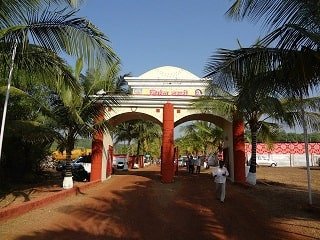
Ganapatipule is a Holy place, nearly 4000 years old Swayambhu of Lord Ganesha on the western ghats of India in Maharasthtra near Ratnagiri, surrounded by ranges of Sahayadri Mountains on the sea shore filled with mango, cashew, coconut and casuarina trees. The name Ganapatipule is derived from ‘Ganapati’ (the Lord of Ganas) and Pule means Sand Dune. It is located in Ratnagiri District in the coastal area of Konkan region and situated at about 35 Kms from Ratnagiri Railway Station. Ganapatipule was selected by H. H. Shri Mataji Nirmala Devi for celebrating Christmas Puja for around ten years. Thousands of Sahaja Yogis from across India and all over the world visited Ganapatipule for the puja celebtations and Sahaja marriages.
Why Ganapatipule? “Ganapatipule has a special significance – because He is Mahaganesha. The Ganesha at Mooladhara becomes Mahaganesha in the Virata, that is the brain . . . The main root, as they call the taproot, the main root is innocence, is Shri Ganesha. And He becomes Mahaganesha in Ganapatipule. . . Here He’s surrounded by the Father Principle, the Guru Principle of the sea, the ocean – the Indian Ocean. That is, here He becomes a Guru . . . Here, as we see in Ganapatipule, Shri Ganesha is in its complete matured form; so that we develop also our Mahaganesha within ourselves . . . Today we came to Ganapatipule, it has a great significance, among the Asthavinayaka – eight Swayambhus of Shri Ganesha). It is the place of Mahaganesha. Mahaganesha is Pithadhish (Governor of all pithas) and sitting on this pitha, he looks after (protects) all the Ganesha Swayambhus.
How Ganapatipule was discovered? The other day somebody was asking Me, how did you find Ganapatipule ? Actually I didn’t know, and in Maharashtra it is not a well known place. They go to Ashta Vinayakas but not to this Maha Vinayaka !……Once I was coming back from Ratnagiri and I saw a really very big star on top of this temple. But no body else could see it, that was the problem. At that time no Sahaja Yogi could see. So I told them, ‘Let us follow this Star’. It was a very big big one, unusually big, not like a star, but quite a big big star. Very unusual, but they could not see it, other people who were with Me, they said that we can’t see it. ‘ I said, does not matter.’ So I told them to turn it (car), turn it from this HathKhambha and let us go on this another road. And we just followed it. They, of course, listened to me, they didn’t argue.
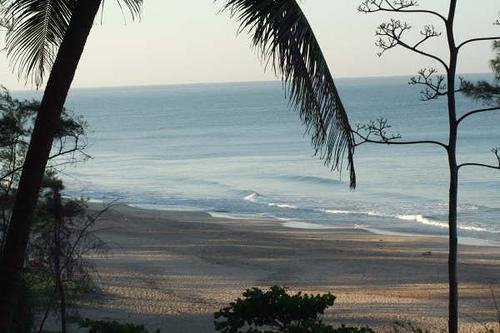
We were just travelling, travelling; It was quite late . Still I said, doesn’t matter, let’s go. By the time we reached Ganapatipule, it was the dawn, beautiful dawn ! I cannot forget it. In that dawn, it looked such a beautiful place, where we are now, and I said, “This is the place where we have to be, where we have to get all the Sahaja Yogis to”. Of course, you know, Ravindra Nath Tagore had already described about this place that people will come here from all over the world and at the Shore of Bharat this will be done. All these are predicted, have been said already. But how miraculously I discovered this place is very surprising… And the place was very beautiful and beautifully vibrating. I stayed here for two days and I decided that this is the place we have to take. Ultimately we got this land and we got all these things here but people troubled us a lot…. Shree Mataji Nirmala Devi, Ganapatipule, December 25, 1999
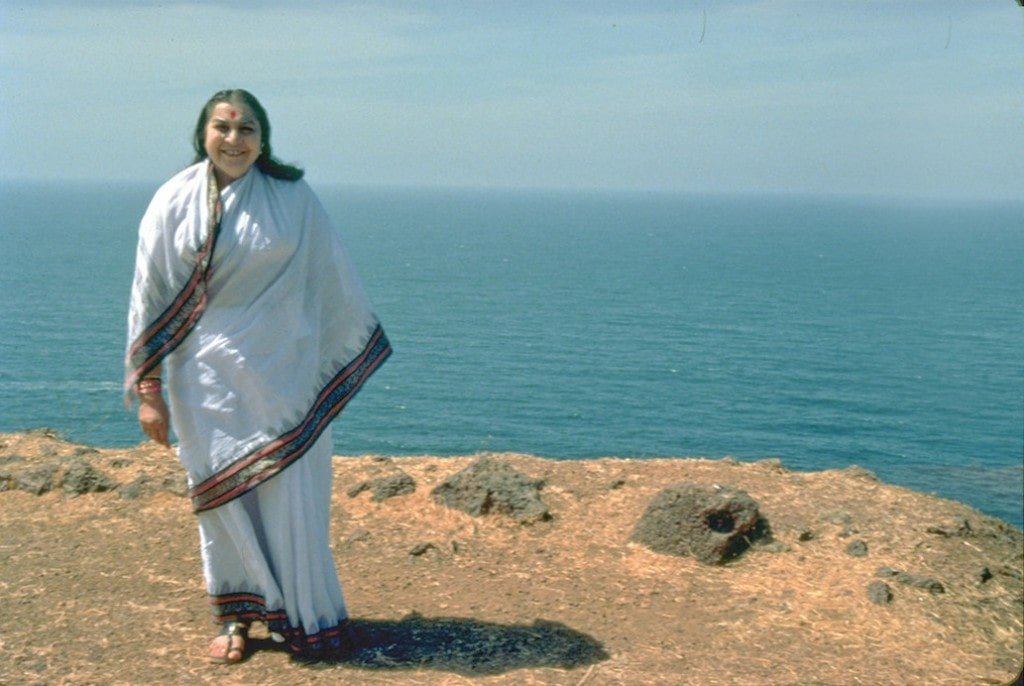
How to reach?
Address: Nirmal Nagari, Arrey Warrey Road, Malgund-Bhailadi, Malgund Ratnagiri, Maharashtra 415615 Contact: +91 2357 235662, +91 2357 235663 Nearest Railway station: Ratnagiri Nearest Airport: Chatrapati Shivaji Terminal International Airport(T2), Mumbai
Sahaja Yoga center in Pune – Pratishthan
Shri Mataji Nirmala Devi lived in Pratishthan from 1986 till 2010
“You must be knowing that I was born in Chhindwara, and Mecca and Chhindwara are on the same Cancer Line (Tropic of Cancer) – How is it?……” -H.H. Shri Mataji Nirmala Devi (Cabella Ligure, Italy, 25.05.1997)

Her Holiness Shri Mataji Nirmala Devi lived in Pratishthan from 1986 till 2010. Her residence ‘Pratishthan’ was named after the capital of her ancestors the Shalivahanas (presently called Paithan). Pratishthan, was gifted to H. H. Shri Mataji Nirmala Devi Sahaja Yoga Trust (National Trust) on 08 December 2010. The National Trust established H.H. Shri Mataji Nirmala Devi Museum at Pratishthan, Pune on 19 July 2015 in the memory of our most Beloved Mother.This is the first museum of its kind in the world because it extols the Glory of Adi Shakti, the Primordial Mother.
The construction of Pratishthan commenced on 08 January 1986. Shri Mataji personally designed Pratishthan to demonstrate how vibrations penetrate matter and create the coefficient of vibrations. Thus She created every floor as a chakra, every room a petal of that chakra, and Her bed room the abode of the Primordial Kundalini, guarded by the Swayambhu of Shri Ganesha that was miraculously unearthed in the Conference Hall (Meditation Hall). Each and every room was vibrated by Her presence. If you witness with the eyes of your Kundalini you will enjoy the creation of the cosmos in every room. Shri Mataji used to say “Mix a little colour to soften the harsh tones, and break the rigid lines for the Kundalini to spiral.” Thus we could make our world a beautiful reflection of Pratishthan. She built a grand staircase for the Kundalini to spiral up the Sushumna channel to the Sahastrar. Another staircase to its left formed the Ida channel, and the one to its right, the Pingla channel emanated from the right Swadisthan, the centre of creativity and music.
All the material used was to enhance the vibrations, whereas material that carries no vibrations like plastics and synthetic materials were not used. Marble absorbs the vibrations most, and Shri Mataji specially selected pink marble to embrace Her Sahaji children with the glow of Her love. The engineers suggested an imposing facade but She did not want her Sahaji children to feel distant from Her by its awe, and hence She said that Her children who were coming to their Mother’s house, should feel the warmth of Her love. On a visit to Rajasthan She was drawn by the vibrations of the humble Rajasthani stone craftsmen, and bought a Haveli. She then reassembled the lattices to create a homely, Motherly facade. Not just that, She placed her first born son Shri Ganesha on the threshold to escort the new born babies to the Lotus Feet of their Mother.
Since the land was at different levels, the engineers suggested reducing the plinth to zero level. But Her divine vision transformed the disadvantage to an advantage and incorporated a split level instead. From time to time She stayed in every room. Since the land was at different levels, the engineers suggested reducing the plinth to zero level. But Her divine vision transformed the disadvantage to an advantage and incorporated a split level instead. From time to time She stayed in every room. Even before the house was ready She moved into a make shift room above the garage to supervise the construction.
Six months later, Her husband, Sir C.P. Srivastava retired as Secretary General of International Maritime organisation and they temporarily shifted to a suite of rooms on the first floor. Six months later they shifted to the top floor. When the ground floor was finally completed, She moved into the Peacock Room (The current bedroom). Shri Mataji’s Leela is full of surprises, and to unfold Her Divine Leela, the museum has been divided in three stages. The ground floor was used as Her personal residence. The corner room was Her bedroom which She named the Peacock Room. It opens into a spacious living room, dining area, study and reception room of Shri Mataji.
The first floor in Phase 2 will display Shri Mataji’s life in photographs from different countries and gifts of Sahaja Yogis from all over the world. At the beginning of Sahaja Yoga in 1970, Shri Mataji instructed the yogis not to give Her gifts. But how else could they express their love? As the loving Mother yielded to the devotion of Her children and She added this special floor to treasure their heartfelt sentiment. However small a gift was, it had a large place in Her heart, and She preserved each token in beautifully carved chests for posterity to cherish how much She loved her children. The master display gallery of the museum is the music hall. It displays puja artefacts and items used by Her.
At the ground floor lies a beautifully manicured Garden of Eden, and adjacent to it stands the Nirmal Dhara Fountain. At the ground floor lies a beautifully manicured Garden of Eden, and adjacent to it stands the Nirmal Dhara Fountain. Adjacent to Shri Mataji’s bedroom is the gallery of pictorial display depicting her journey from childhood to Maha Samadhi in which She emancipated humanity through Her unique discovery of Sahaja Yoga. As you look carefully through the eyes of your Kundalini you will discover many sweet insights to carry home for your ascent in your onward journey in Sahaja Yoga!
Sahaja Yoga center in Dharamshala
ISPS students pursue their education in a loving, family atmosphere with a fundamental connection and awareness of their spiritual energy. They are equipped to maintain a balance in all aspects of life through the practice of Sahaja Yoga as part of their daily routine. They develop wisdom and discretion, the ability to make dharmic choices and live in a collective environment with respect, love and joy. The ISPS family nurtures awareness of responsibilities towards the individual self, fellow students, all the staff and the environment. The ISPS student emerges with excellent maturity and sensibility towards fellow human beings, and becomes a dynamic , dharmic and model citizen of the world.
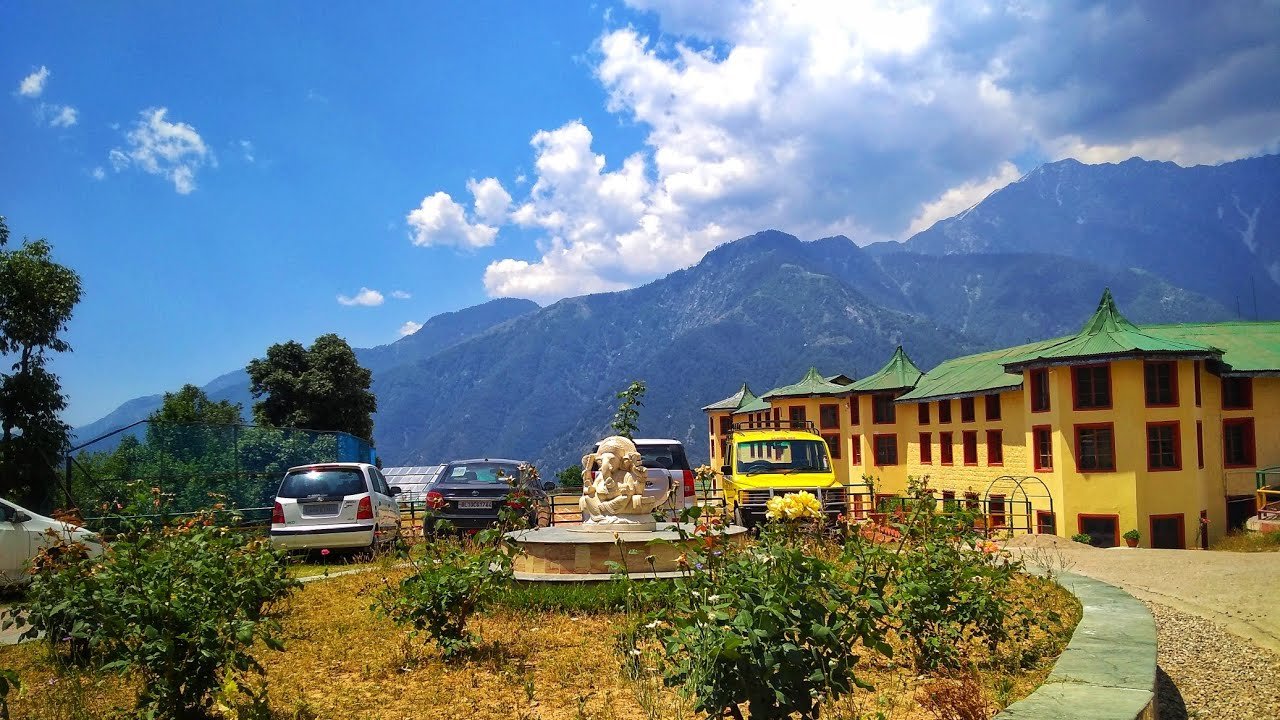

The school is affiliated with the Council for the Indian School Certificate Examinations bearing number H.P 016 which administers the Indian Certificate of Secondary Education (I.C.S.E). This board was set up in 1956 to administer University of Cambridge Local Syndicate Examinations. The School conducts classes from class 1 to 12, being a Higher Secondary School. Shri Mataji chose this curriculum Herself because it has a high academic standard, being quite practical and not too methodological. The standard is higher than State Boards in India, and is at par with General Certificate of Secondary Education (GCSE) in UK or equivalent in other countries. The School’s session begins on March 15th and ends in December. Registration of students is held from March 15 to 18. Entrance exam for the new students is conducted on March 17 and 18.
International Sahaja Yoga Research & Health Centre, Belapur, Navi Mumbai
Health Centre Treatment for Diseases Treatment for Hypertension, Bronchial Asthma, Diabetes, Infertility, Epilepsy, Thyroid Carcinoma, Migraine, Epilepsy, Depression and Cancer have been cured at the Health Centre.
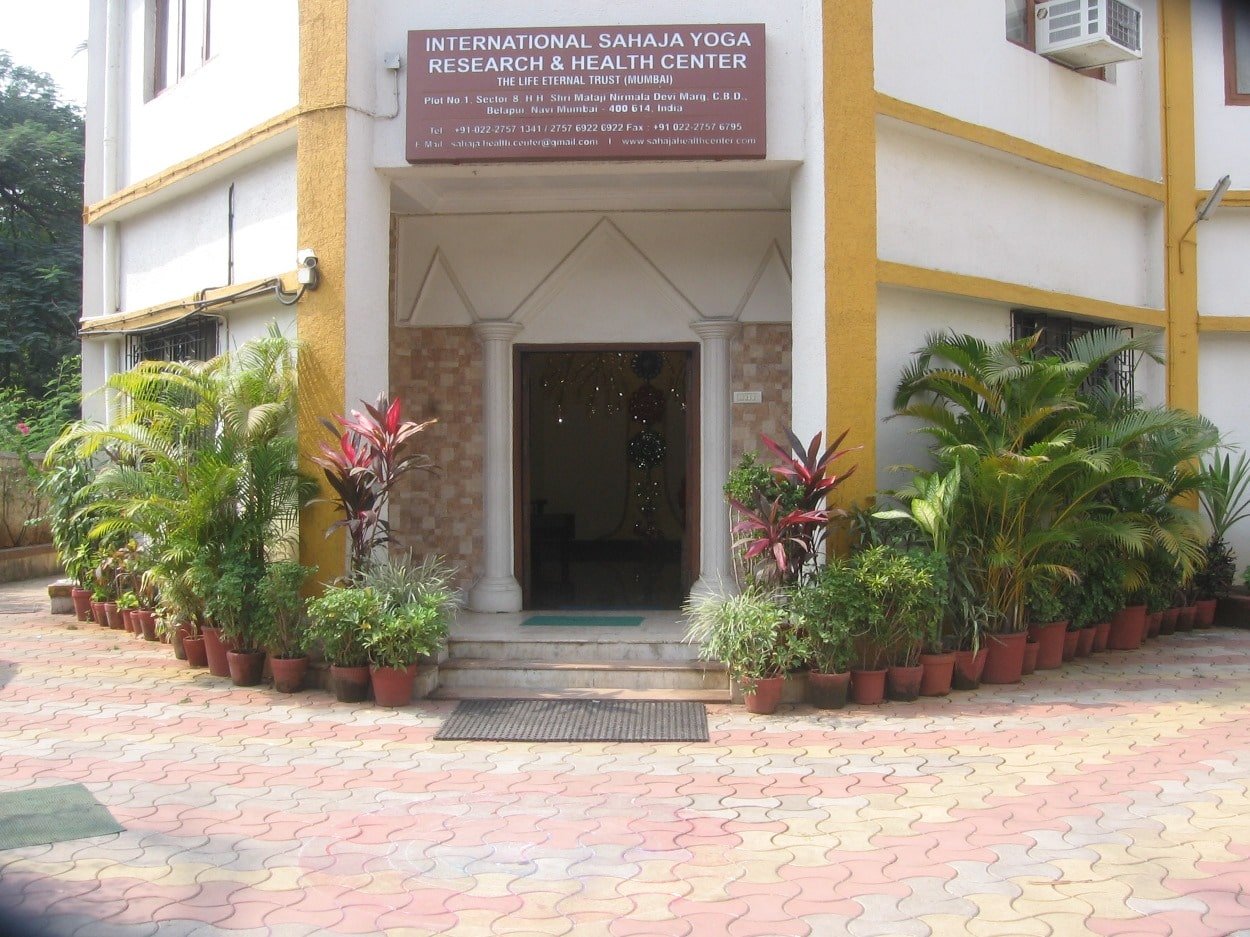
The International Sahaja Yoga Research and Health Centre, CBD Belapur, Navi Mumbai, India, founded by Her Holiness Shri Mataji Nirmala Devi on 19th February 1996, is a “true gift to the humanity”. The Health Centre is situated in picturesque, green surroundings and is a unique Health Centre of its kind in the world. At the Health Centre treatment for diseases is done by vibratory awareness, developed through Sahaja Yoga meditation. The Health Centre has witnessed an increasing number of patients since its inauguration and has attracted many overseas visitors and many Indians.
Her Holiness Shri Mataji Nirmala Devi appointed the late Prof. Dr. U. C. Rai as the first Director of the Health Centre.
Prof. Dr. U. C. Rai had worked as Head of the Physiology Department of Jawaharlal Institute of Postgraduate Medical Education and Research, Pondicherry, and as a Professor in various medical colleges of Delhi. He had done research at the Lady Hardinge Medical College and associated hospitals, New Delhi, on the role of Sahaja Yoga in the treatment of psychosomatic diseases. He was conferred with the ‘Vladimir Verniczky Honoured Doctor’ award in Moscow, for his research work on Sahaja Yoga. The fundamental uniqueness of this Health Centre is to provide humanity with healing through vibrations generated by the practice of Sahaja Yoga. Prof. Dr. U. C. Rai was of the opinion that through Sahaja Yoga, the results in the medical field were fantastic, especially in areas where doctor’s efforts had been ineffective. At this International Sahaja Yoga Research & Health Centre, Shri Mataji’s Divine Grace has cured patients from all around the world. Sahaja Yogis across the globe especially from overseas countries like United States of America, Australia, United Kingdom, France, Switzerland, Austria, Africa, Malaysia, Singapore, Russia and Canada have visited on a regular basis to get their subtle imbalances corrected as well as their physical ailments cured and have immensely benefited from the Sahaja Yoga Meditation and Sahaja Yoga techniques practiced at the Health Centre.
Cases of varied etiology such as Hypertension, Bronchial Asthma, Diabetes, Migraine, Epilepsy, Depression and Cancer have been cured at the Health Centre. The influx of number of patients visiting this Health Centre has risen progressively since 1996. A total of about 90,000 patients in-house admissions plus out patients, from all parts of the world have visited the Health Centre have benefited from the Sahaja method of treating the inner imbalances and thereby getting cured. To be admitted to the Health Centre patients needs to send individual requests by fax, post or e-mail, along with a brief medical history or a brief account of subtle imbalance, to the doctor in charge. Subsequently, all information and communications for booking and reservations for room accommodation at the Health Centre are taken care of by the reception desk.
With a huge complex that houses two floors furnished with all the necessary facilities for the comfort of the visiting and the attending yogis. The main Health Centre campus seems to be amidst a concrete urban conglomerate of CBD, Belapur on the H.H Shri Nirmala Devi Marg on the highway yet from it overlooks a beautiful lush green hillock as the backdrop and one has a beautiful overview scenic view from its roof. The main complex has a well-defined reception area, separate ward accommodation for males and females also has special Non A/C and A/C rooms. The large kitchen with high health and safety standards along with an expert chef who takes care of the balanced diet for the yogis in the indoor wards. There is a large Meditation hall adjacent to the reception area while at the other end it has a very serene room. This is where yogis are diagnosed by the attending doctors in charge and taken care of the individual Sahaja Yogis undergoing cleansing session by simple method of Sahaja Yoga meditative techniques as devised by H.H. Shri Mataji.
The results are very positive in most of the cases who accepts the basic fact of recognition of the power within that created us. This positive result is achieved through the raising of the Kundalini of the individual and attending to various subtle centers that may need the attention of this subtle power to function in integration with other subtle centers within the body. The Health Centre has beautifully furnished accommodation for Her Holiness Shri Mataji on the first floor while the ground floor underneath has been the area for the research work. Also the centre of the complex has a beautiful rectangular shaped lawn with meditation cum stage used for collective functions within the campus, under the open sky. The lawn provides a silent respite to the seeking souls as it helps generate more vibratory awareness with in as one undergoes the experience of awakening one’s own energy from within. The yogis use this lawn as an ideal morning and evening meditation ground.
Virtually every yogi who had come to the Health Centre has greatly benefited from the Sahaja Yoga method of treatment and numerous cases registered have been completely cured. These cases include being cured of infertility, epilepsy, thyroid carcinoma, cancer and many other illness. The Health Centre has been experiencing an overwhelming influx of yogis day by day, year after year from India as well as overseas countries. The popularity may be because of the belief and the astonishing benefits in terms of both spiritual and physical health that this Heath Centre delivers to the world by the Holy Grace of Shri Mataji. All Sahaja Yogis and staff at Health Centre pray to Her Holiness to continue to shower Her Divine Blessings on the Health Centre.
International Sahaja Yoga Research & Health Centre, Greater Noida, India

Leaving the city of New Delhi behind, across the river Yamuna in the quiet and lush surroundings of Greater Noida, the Sahaja Yoga Health Centre is a sight for sore eyes and a balm for the ailing subtle system.
Founded by Shri Mataji Nirmala Devi, on November 14th, 2008 and inaugurated on November 30th, 2010, the Health Centre has been operating successfully, supporting the international community of yogis.
It was the culmination of Shri Mataji’s dream to construct the Health and Research Centre on the same site as Vishwa Nirmala Prem Ashram (NGO) In a Doctors’ Conference at AIIMS on April 2nd, 2002, Shri Mataji said, “but in any case I am thinking of starting a Sahaja Yoga Hospital in our country, especially in Delhi, in Greater Noida, and if some of you doctors can join us, they can help us a lot.” “ Later the Health Centre shall support the NGO” said Shri Mataji in one of her speeches. It took three months to appoint suitable Doctors and Staff. The first working day was March 11th, 2011.
Getting There:-
By Air:- Indira Gandhi International Airport (pick up can be requested)
By road -Taxi (Uber, Ola)
By Rail – New Delhi Railway Station/ Nizamuddin Railway Station
By Metro- Aqua line
Contact us:-
Sahaja Yoga Health and Research Centre,
Plot no. 9, Knowledge Park,
Greater Noida, UP 201310 India
Phone (+91)7835000990 (+91)7835000991 (10 am – 5pm)
Email syhealthcentre@gmail.com
Facilities:-
This facility is available to those who have received their ‘Self -Realization’ To know more about Self Realization.
Yogis are eligible if they are attending the weekly Meditation Centre regularly and practising Sahaja Yoga according to the guidelines given by Shri Mataji. Recommendations from area coordinators are encouraged
| Time spent in Sahaja Yoga | Facility | Timing | Price |
|---|---|---|---|
| 6 months | OPD (Outpatient) | 10 am – 12:30 noon Monday to Saturday | INR 50 |
| 6 months | Day stay | 10 am – 5:00 pm Monday to saturday Nutritious meals included | INR 400 |
| 1 year or more | IPD Accommodation & food + treatments | As advised by the Doctor | Depends on the choice of room |
Price = accommodation + food + treatment charges per person/day
Yogis are charged based on number of days of occupancy . Please indicate if you wish to leave your accommodation during the course of the treatment.
| Type | Indians | Non Indians | Capacity |
|---|---|---|---|
| DOUBLE ROOMS 1 adult in a room | INR 3000 | INR 3000 | Subject to availability |
| 2 adults in a room | INR 1800 | INR 2000 | 2 |
| 4 in a room Only for ladies and family of 4 adult members | INR 1200 | INR 1600 | Upto 4 |
| LADIES DORM | INR 1000 | INR 1500 | 36 yoginis |
| MEN’S DORM | INR 1000 | INR 1500 | 25 yogis |
Testimonials
I felt like I was in the Kingdom of God If there is such a thing as Kingdom of God on Earth.
Prem Chand DelhiCame here with very bad condition physically and mentally but after spending five days here feeling full of energy and love towards Sahaja Yoga.
Roopak DelhiThanks to our Holy Mother and Her beautiful instruments for being so kind and wonderful. Everything here is amazing. Beautiful work being carried on by our Mother.
Priti and Rishi Dobey CanadaI came with severe backache, but now when I’m discharged; I’m cured. I got cured by Sahaja Yoga treatments and of course with dedication of doctors and sisters and the most powerful love of Shri Mataji Nirmala Devi.
Guneet Bhalla Guneet BhallaOne can experience the true meaning of pure Love. Even though a complete stranger, you treated me with such sahaja love and I’m grateful for that experience I am also grateful to Shri Mataji for granting me a place in Sahaja and for Her love. ( Translated)
Anonymous Yogi IndiaI came to the Health Center with no expectations whatsoever, but with a great desire to deepen my connection to the Divine. I’m not going to lie, I was a little apprehensive at first – thinking the Health Center was going to be like a military camp for Spiritual Development. I was completely wrong. I felt nothing but love and care from the staff, the doctors and Her Holiness, our Mother. The health center is a magical place, so beautiful. The staff are amazing.
Anonymous YogiIt’s like coming home to family and wrapped in Mother’s Love again. Slowly, slowly steadily deeper into meditation. Such a beautiful combination to have Prem Ashram with the children and another Miracle – their singing.
Kuty AustraliaAfter more than one month my health improved a lot, and I have got a deeper connection with Shri Mataji and with my Spirit.
Anonymous yogi
Sahaja Yoga Center in Nashik – Kala Pratisthan, Vaitarna
Shri P. K. Salve Kala Pratishthan, an academy of Indian Classical Music and Fine Arts
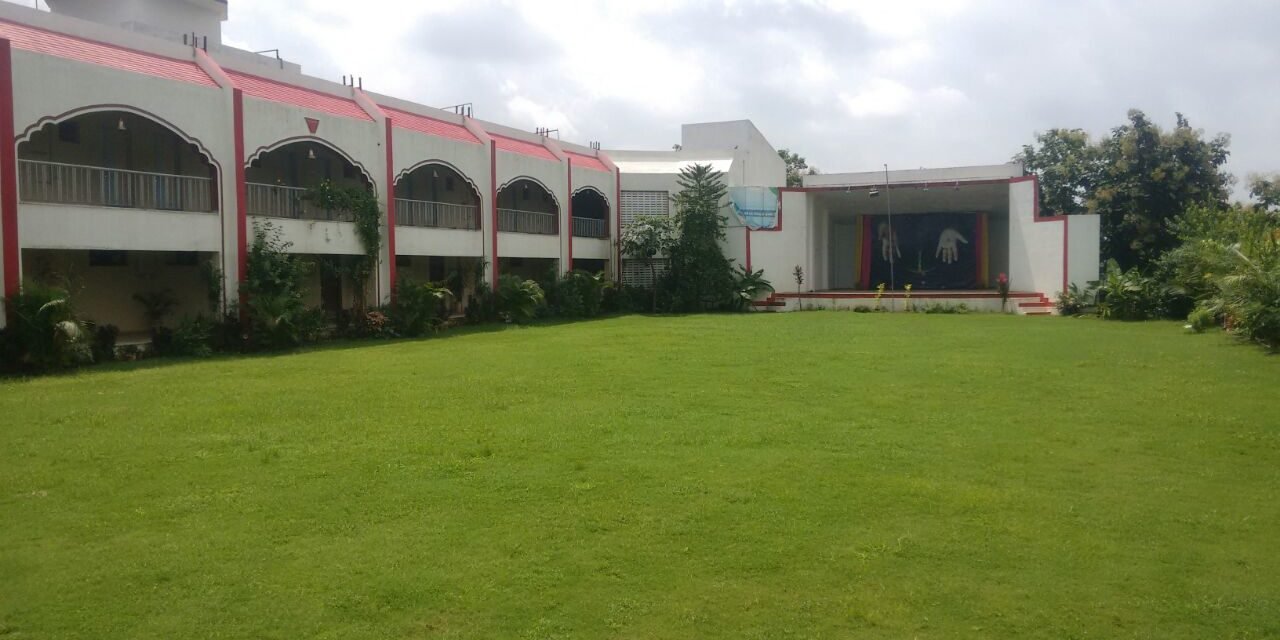
Ever since the acceptance and appreciation of the Sahaja musical group Nirmal Sangeet Sarita, particularly by Western Sahaja Yogis, it was Shri Mataji’s desire to start a music school whose aim would be to preserve and perpetuate the traditional values of Indian classical music, as well as teach and spread them all over the world, beyond India’s boundaries. This had been the dream of Shri Mataji’s father, honorable Mr. P. K. Salve, one of the foremost fighters for India’s independence, eminent lawyer and connoisseur of Indian classical music. H.H. Shri Mataji Nirmala Devi established Shri P. K. Salve Kala Pratishthan, an academy of Indian Classical Music and Fine Arts, at Vaitarna & inaugurated in 2002. Vaitarna, surrounded by Dams and Lakes in the vicinity of scenic greenery, is about 100 kms from Mumbai and about 80 kms from Nashik off National Highway 3 (Mumbai Agra Highway), and accessible from Khardi Railway Station (25kms) of the Central Railways. The Institution is situated within an area of 40 acres of land comprising of streams, undulations and natural landscape. Modak Sagar and Tansa Dams are in the vicinity with a thick reserved forest cover. The buildings have been architecturally planned under the instructions of Shri Mataji, with a central courtyard and a covered stage. The land is in a very picturesque setting and is full of vibrations, which are conducive to meditation and to the creation of music which is in tune with the Spirit.
Just sitting down in that place you find yourself in meditation! The vibrations help not only in the creative process but also in transporting the residents into realms of meditation and spirituality. Some of them have said that the more time they spend in this special environment and atmosphere, the deeper their seeking and transformation becomes. Classrooms are well lighted, ventilated with a commonly constructed ten foot wide corridor. Large Halls provide for Dance and Drama, while 5 large classrooms can accommodate 20 students in each classroom along with their instruments. A big dining Hall with a kitchen is also constructed separately. Gents quarters are separately constructed with double occupancy in each room. Research on Pre-intervention assessment : Status of Children before and after initiating Sahaja Yoga Meditation
